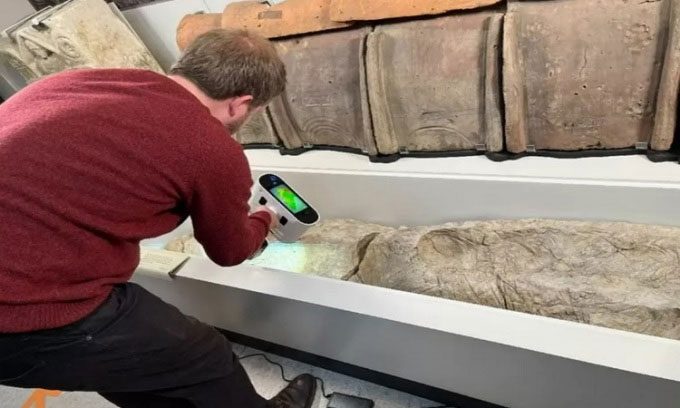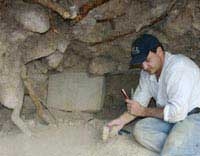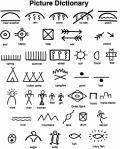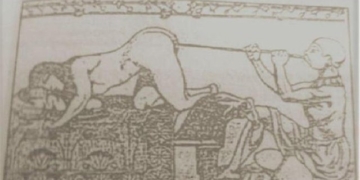Archaeologists are employing advanced imaging techniques to explore the unusual customs of ancient Romans, specifically the practice of pouring plaster over the remains of deceased relatives.

Researcher 3D scanning plaster-covered remains in a coffin. (Photo: University of York)
The ancient Romans poured a type of liquid plaster into coffins, completely covering the bodies of the deceased and allowing the compound to harden. This created a hollow space, in which the shape, size, and original posture of the deceased were perfectly preserved as if they were cast. The research team noted that these Roman plaster tombs can be found throughout Europe and North Africa, but they are particularly common in England, with at least 45 recorded cases.
In a study released on June 3 during the York Festival of Ideas, scientists from the University of York collected 3D scans of 16 plaster tombs. This type of tomb usually contains one individual per coffin. However, the imaging revealed a plaster coffin that contained the remains of a family, including two adults and an infant who died at the same time.
“The 3D imaging allows us to witness a family tragedy nearly 2,000 years after the event occurred,” stated Professor Maureen Carroll, head of the Roman Archaeology department at the University of York. “The outlines of the three individuals beneath the layer of plaster are clearly visible to the naked eye, but it is challenging to determine the relationships between the deceased and discover how they were adorned or wrapped. The 3D model helps clarify these ambiguous points.”
Next, the research team will conduct a more detailed analysis to learn about the age, sex, diet, and even the geographical origins of the family members in the tomb. However, their study cannot reveal why the Romans practiced this form of burial, which seems unrelated to high social status. Regardless of the purpose behind pouring plaster, the custom is extremely beneficial for archaeologists seeking to understand aspects of the lives of the deceased.
“Through advanced scanning technology, researchers can analyze archaeological materials to find details not visible to the naked eye,” shared Patrick Gibbs, the technology director of the Heritage360 project, who works with digital imaging.





















































